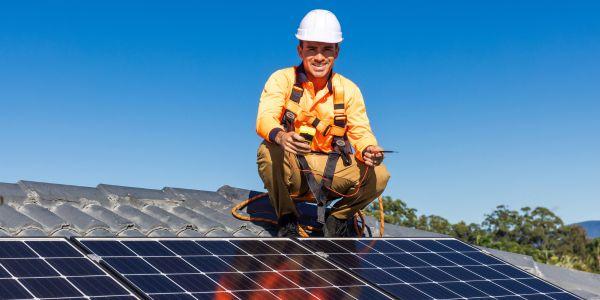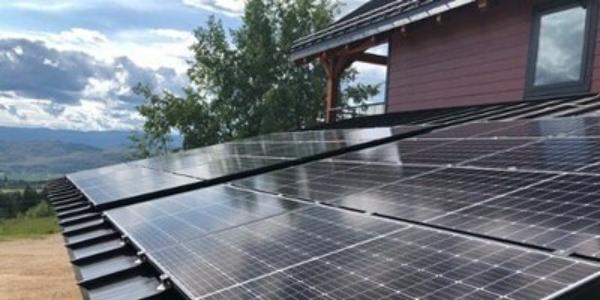UP TO THE MINUTE
Thinking of Going Green? Consider Going With Metal!

By Drexel Metals.
Here’s why metal roofing is so sustainable; it could even help building owners earn sustainability certifications.
As we continue to see the effects of climate change on our planet, building owners everywhere are looking to do their part. With the construction industry being the cause of nearly one third of the total energy consumed and greenhouse gas emissions, it’s important that this industry does its part. This is why the building industry is seeking ways to build more sustainably.
Once touted as the least energy-efficient component of a building, the roof plays a crucial role in the heating, cooling and subsequent energy loss of a structure. Metal roofing systems, however, qualify for numerous sustainable building programs including SITES™ certifications and LEED credits, making them the ultimate choice for a greener build.
Setting the sustainability stage
At their core, metal roofs are the sustainable choice for more environmentally friendly builds. They are made from mostly recycled materials, are lightweight allowing for a more efficient shipping process, and they boast a much longer lifespan than other roofing materials.
Drexel Metals takes its commitment to sustainability a step further with its regional manufacturing program. This nationwide network of local manufacturers and installers helps to streamline the shipping and production process. Instead of sourcing prefabricated panels and trim from one plant, Drexel can utilize its hubs of coil and flat sheet stock to send into the local market.
Shipping coil and flat sheets allows for greater load capacity and trailer utilization over prefabricated products. This reduces the number of truck loads needed and the associated carbon emissions. This process helps to eliminate much of the lumber that would typically be required for crating prefabricated panels. Additionally, in order to reduce onsite waste, fabricators can simply feed coil into a roll-forming machine and cut to the specific length needed for the project.
Becoming SITES™ certified
The Sustainable Sites Initiative™ (SITES™) is a rating system for sustainable land design and development. This system understands that as the world population grows, the land becomes more developed and urbanized. However, this doesn’t mean that land, resources, ecological systems and quality of life in the community have to be sacrificed. When it comes to green building, there are opportunities for the structures we build to give back, whether in isolating carbon or regulating climate.
Metal roofs acquire several points from the SITES™ rating system. One way they do this is by reducing the urban heat island effect through cool roof design. But what is a cool roof?
These painted metal roofing systems use reflective pigments that absorb less sunlight (solar energy) to reduce the amount of heat transferred into a building. This keeps the internal temperature of a building more regulated and thus cuts energy costs. However, a cool roof doesn’t just have to be painted white to reflect this energy, as there are many cool roof rated colors. Some of these can reflect and re-emit solar radiation by up to 90 percent.
Likewise, metal roofs also earn SITES™ credits because they use recycled materials and are themselves recyclable. This reduces waste, avoids landfilling materials, and lowers the energy needed to create the metal coils and panels. Their lifespan can last 40-60 years, which means needing to replace the roof far less often than other roofing materials. When a roof has reached the end of its service, it is fully recyclable and can even be donated to installers for scrap credit.
Becoming LEED certified
In addition to SITES™, there is also the Leadership in Energy & Environmental Design (LEED) program. LEED focuses on certifications for green buildings that support optimal energy performance. Because metal roofs contain up to 60 percent recycled material and are 100 percent recyclable at the end of their service life, they contribute to the “Materials and Resources: Recycled Content” LEED credit. This also means they play a crucial role in helping reduce the billions of pounds of roofing waste generated in the U.S. each year.
Further, metal roofing systems’ long lifespan, often more than double that of other roofing materials, diverts waste from landfills. A roof that needs to be replaced far less often means a greener build overall since less energy is spent and carbon wasted on replacement materials and disposal of old roofing debris.
The long service life and durability of a metal roof also means greater compatibility with solar panels and thus additional LEED credits under “Energy & Atmosphere: Renewable Energy.” The metal roof allows the panels to be installed without penetrating the roofing deck, as they merely clip into the standing seam, reducing the risk of leakage and creating zero damage to the roof itself.
Paving a greener path
It’s clear that the roof doesn’t need to be the least energy-efficient element of a building. Metal roofing systems are proving there is another way as they work to support a net-zero waste goal, a regulated building temperature, and an increase of self-supplied renewable energy. Learn more about Drexel’s metal roofing systems and their LEED qualifications.
Learn more about Drexel Metals in their directory or visit www.drexmet.com.
Original article source: Drexel Metals



















Comments
Leave a Reply
Have an account? Login to leave a comment!
Sign In